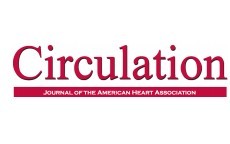Circulation:长链单不饱和脂肪酸可增加心衰发生风险
| 导读 |
数十年的动物实验表明食物中长链单不饱和脂肪酸(LCMUFAs)具有心脏毒性作用。虽然没有关于对人类影响的研究,但有机制研究告诉我们其可能存在潜在心脏毒性作用。包括LCMUFAs在内的长链脂肪酸主要在过氧化酶体而非线粒体内氧化。过氧化物酶体脂肪酸氧化产生活性氧和各种细胞内脂质代谢产物会激活信号传导通路,进而抑制线粒体内脂肪酸氧化,合成心脏脂滴,抑制糖... |

数十年的动物实验表明食物中长链单不饱和脂肪酸(LCMUFAs)具有心脏毒性作用。虽然没有关于对人类影响的研究,但有机制研究告诉我们其可能存在潜在心脏毒性作用。包括LCMUFAs在内的长链脂肪酸主要在过氧化酶体而非线粒体内氧化。过氧化物酶体脂肪酸氧化产生活性氧和各种细胞内脂质代谢产物会激活信号传导通路,进而抑制线粒体内脂肪酸氧化,合成心脏脂滴,抑制糖酵解从而诱导凋亡。 LCMUFAs的主要来源为芥花籽油(加拿大低芥酸油)。有研究报道分析LCMUFAs的来源为芥花籽油(20%–50%)及相关产品、某些鱼类(5%–30%)、肉类和家禽(0%–5%)。
在动物实验模型中,LCMUFAs可诱导心肌纤维化和脂肪变性,由此分析,LCMUFA可能会增加心衰的发生率,为验证这一假设美国的研究人员通过分析2项独立的前瞻性队列研究中LCMUFA暴露(采用其血浆磷脂作为评价标志物)与充血性心力衰竭的相关关系。这两项研究为心血管健康研究(CHS, Cardiovascular Health Study;1992–2006)和社区动脉粥样硬化风险研究(ARIC,Atherosclerosis Risk in Communities Study; 1987–2008)。
研究人员进一步评价饮食因素与LCMUFA标志物水平的关系以及在美国2003-2010年的全国健康和营养检查调查(NHANES)中分析LCMUFA可能的食物来源。
这两项队列研究中,CHS研究包括3694位老年人(平均年龄,75.2±5.2岁);ARIC研究包括3577位中年人(平均年龄,54.1±5.8岁)。他们分析血浆LCMUFAs磷脂(20:1, 22:1和24:1脂肪酸)与充血性心力衰竭的相关关系。在CHS研究中,在939238人-年中共有997次充血性心力衰竭事件发生;在ARIC研究中,在64438人-年中共有330次充血性心衰事件发生。在这两项研究中,经多变量校正后高22:1和24:1脂肪酸水平与充血性心衰事件发生呈正相关。其中22:1脂肪酸的最高和最低五分位数水平相比较的危险比为1.34(95%CI 1.02-1.76)和1.57(95%CI 1.11-1.23),24:1脂肪酸的最高和最低的五分位数水平比较的危险比为1.75(95%CI 1.23–2.50)和1.92(95%CI 1.11–2.23)(P均小于等于0.03)。
在CHS和ARIC研究中,循环LCMUFAs有关的各种来源食物构成和NHANES调查得出LCMUFAs相关关食物情况相符,这包括鱼、肉、五谷杂粮和芥菜。但没有一种食物来源中LCMUFA含量均大于35%。
在这两项独立的队列研究中可以看出,22:1和24:1脂肪酸食物来源明显不同,血液循环内高水平22:1和24:1脂肪酸与充血性心力衰竭发生率相关,这说明LCMUFAs可能有心脏毒性作用。
研究数据也表明由于LCMUFAs多样化的食物来源,因此其潜在的心脏影响不能归因于任何单一食物。
原文链接:
ong-chain monounsaturated Fatty acids and incidence of congestive heart failure in 2 prospective cohorts.
BACKGROUND
Decades-old animal experiments suggested that dietary long-chain monounsaturated fatty acids (LCMUFAs) caused cardiotoxicity, leading, for example, development of Canola oil (Canadian oil low in erucic acid) from rapeseed. However, potential cardiotoxicity in humans and contemporary dietary sources of LCMUFAs are unknown.
METHODS AND RESULTS
We prospectively investigated the associations of plasma phospholipid LCMUFAs (20:1, 22:1, and 24:1), assessed as objective biomarkers of exposure, with incidence congestive heart failure in 2 independent cohorts: 3694 older adults (mean age, 75.2±5.2 years) in the Cardiovascular Health Study (CHS; 1992-2006) and 3577 middle-aged adults (mean age, 54.1±5.8 years) in the Atherosclerosis Risk in Communities Study, Minnesota subcohort (ARIC; 1987-2008). We further examined dietary correlates of circulating LCMUFAs in CHS and ARIC and US dietary sources of LCMUFAs in the 2003-2010 National Health and Nutrition Examination Survey (NHANES). In CHS, 997 congestive heart failure events occurred during 39 238 person-years; in ARIC, 330 events congestive heart failure events occurred during 64 438 person-years. After multivariable adjustment, higher levels of 22:1 and 24:1 were positively associated with greater incident congestive heart failure in both CHS and ARIC; hazard ratios were 1.34 (95% confidence interval, 1.02-1.76) and 1.57 (95% confidence interval, 1.11-2.23) for highest versus lowest quintiles of 22:1, respectively, and 1.75 (95% confidence interval, 1.23-2.50) and 1.92 (95% confidence interval, 1.22-3.03) for 24:1, respectively (P for trend ≤0.03 each). A variety of foods were related to circulating LCMUFAs in CHS and ARIC, consistent with food sources of LCMUFAs in NHANES, including fish, poultry, meats, whole grains, and mustard.
CONCLUSIONS
Higher circulating levels of 22:1 and 24:1, with apparently diverse dietary sources, were associated with incident congestive heart failure in 2 independent cohorts, suggesting possible cardiotoxicity of LCMUFAs in humans.
关注转化医学网
【转化医学网 新浪微博:@转化医学网】
【转化医学网 公众微信账号:zhuanhuayixue】或扫描二维码关注微信

来源:丁香园
 腾讯登录
腾讯登录
还没有人评论,赶快抢个沙发